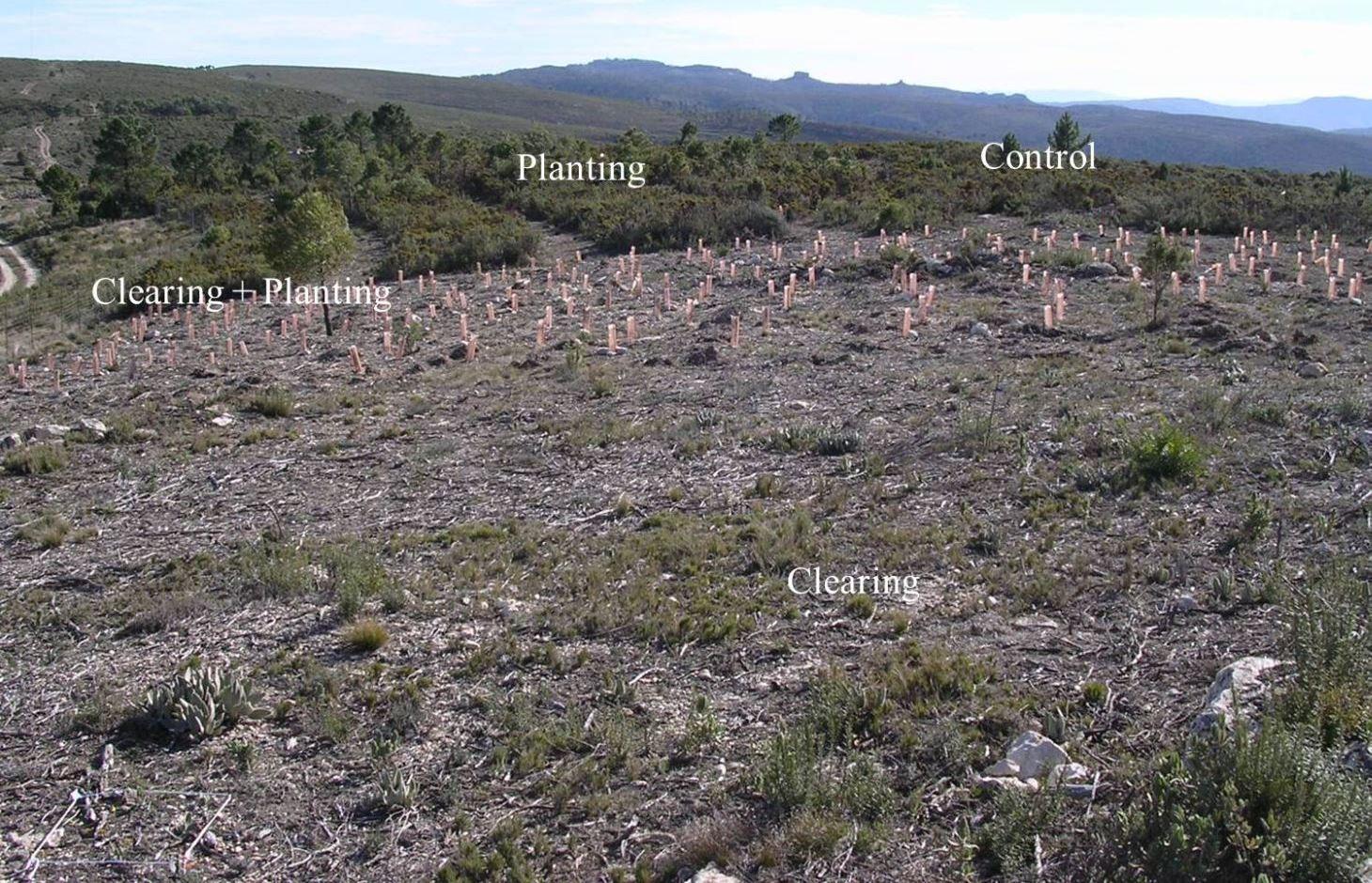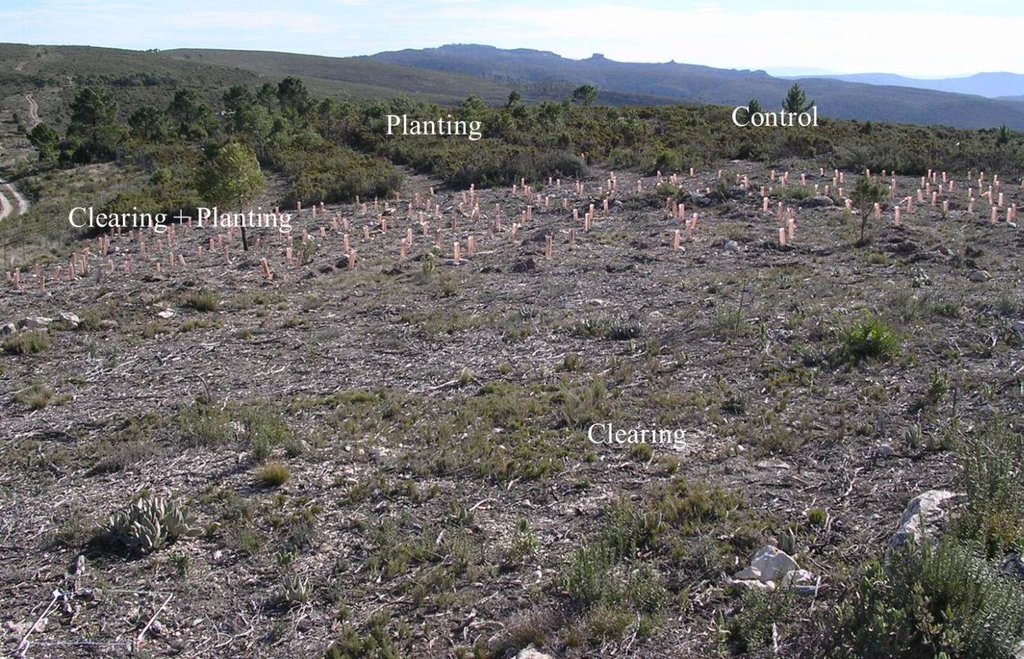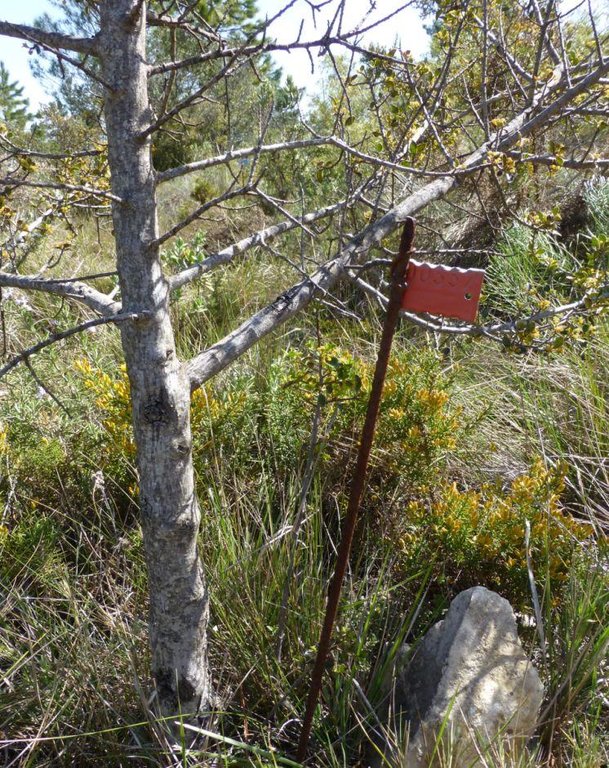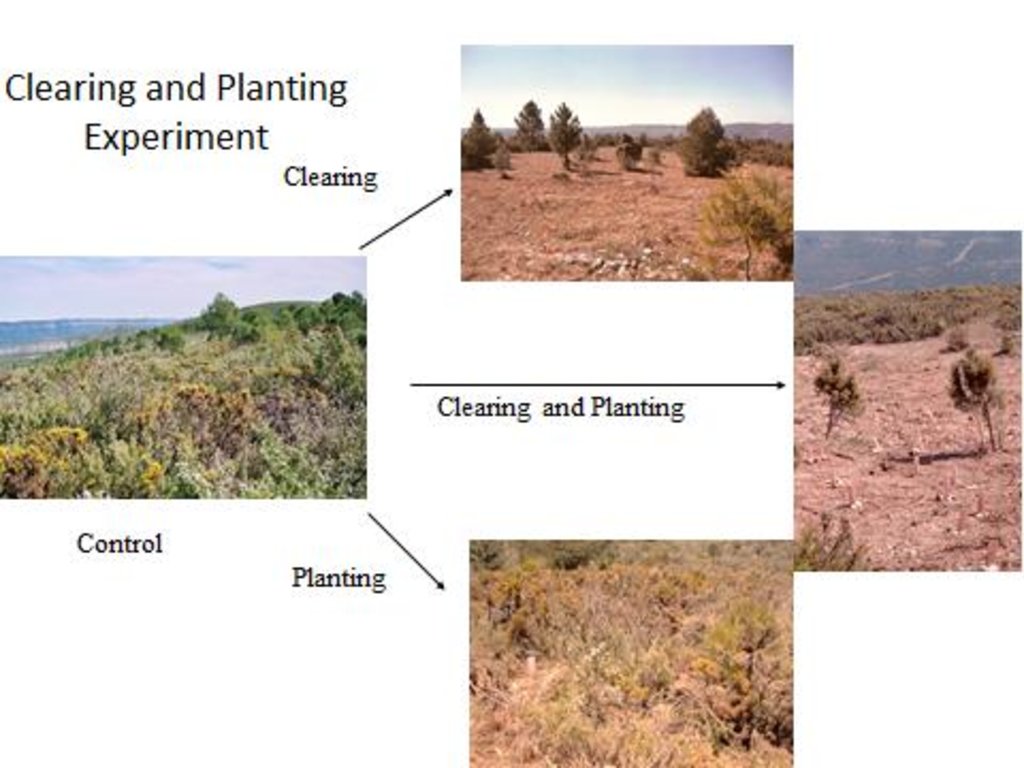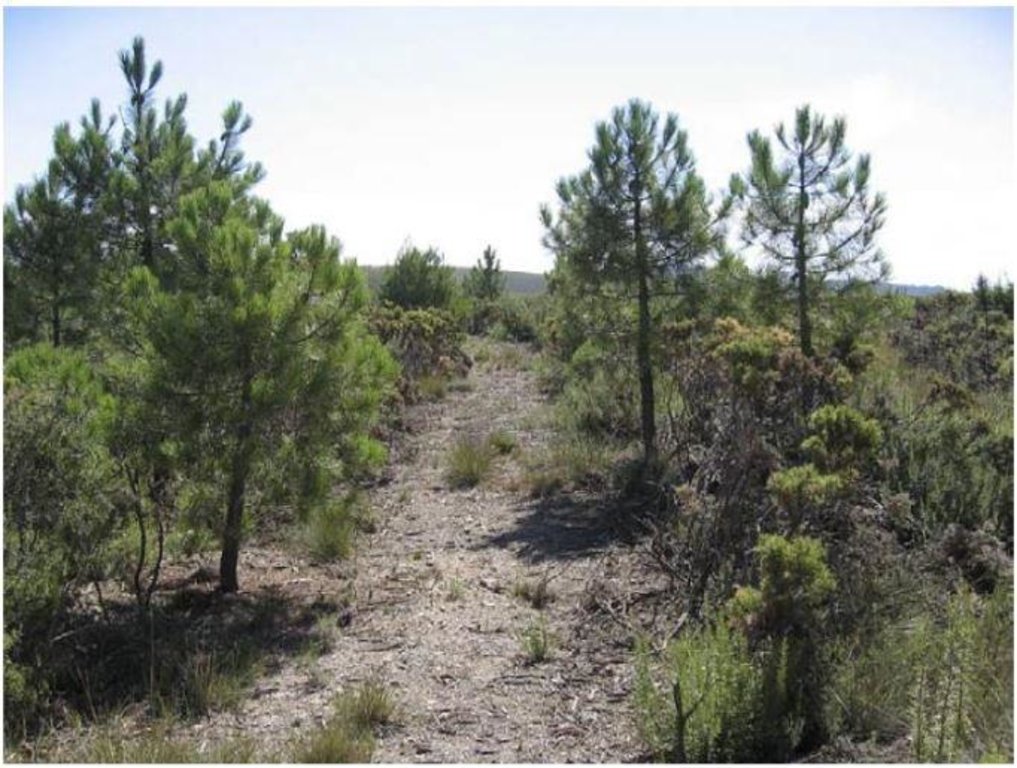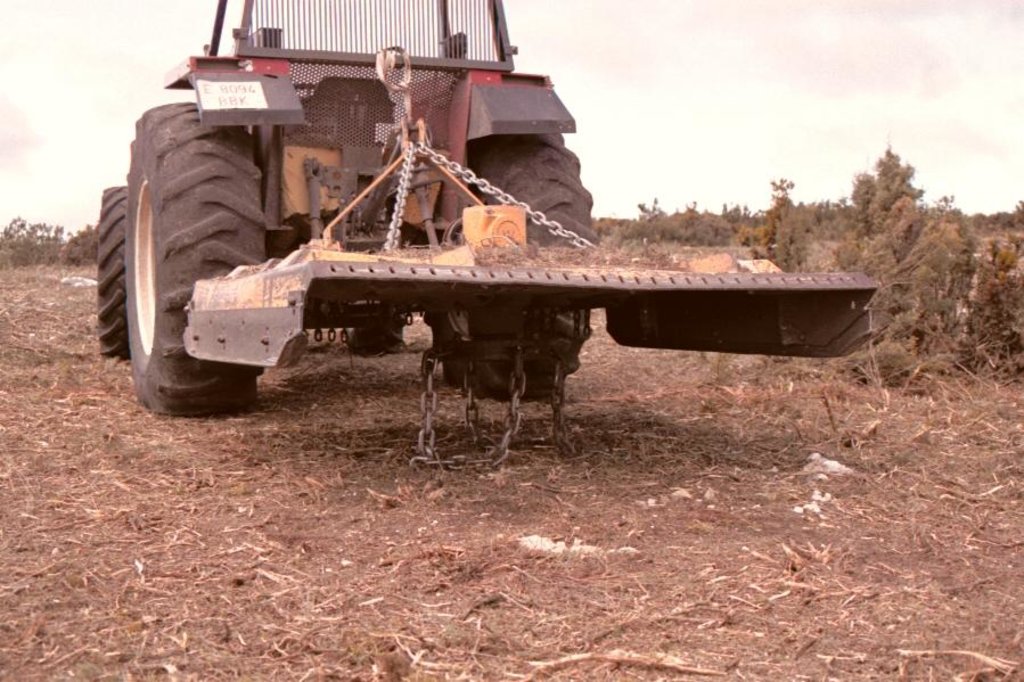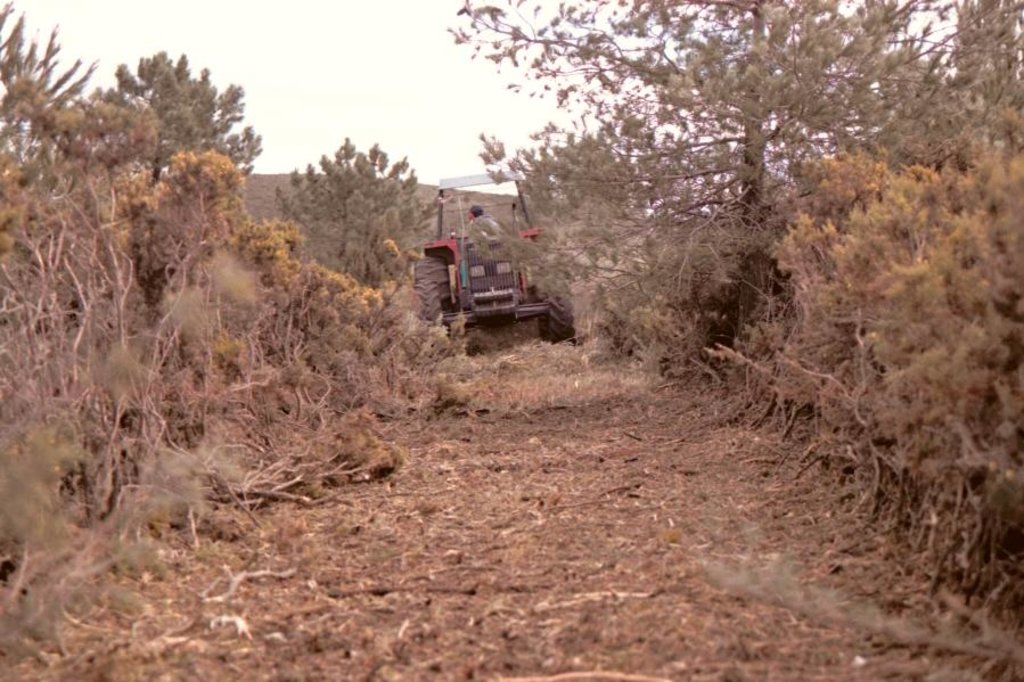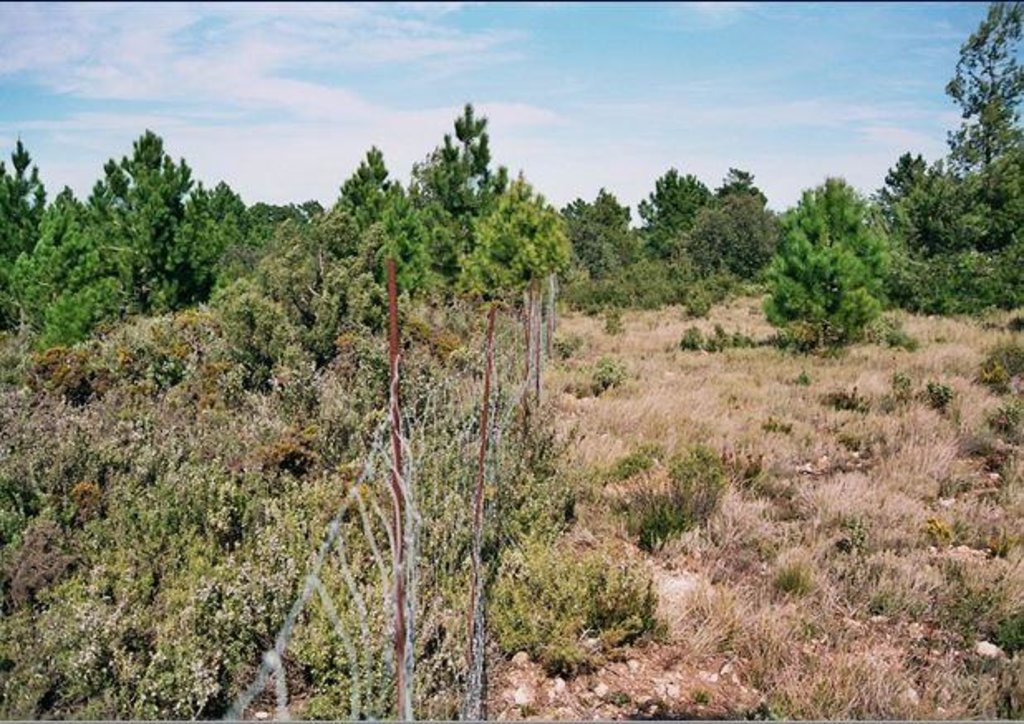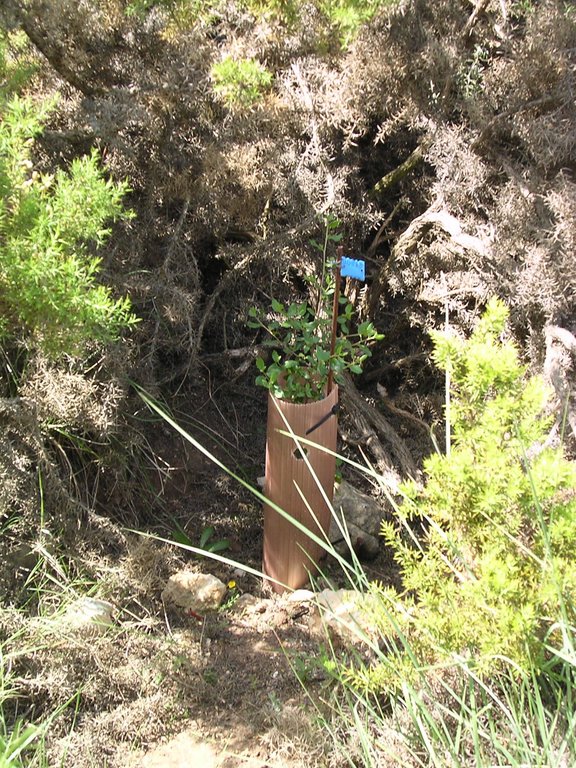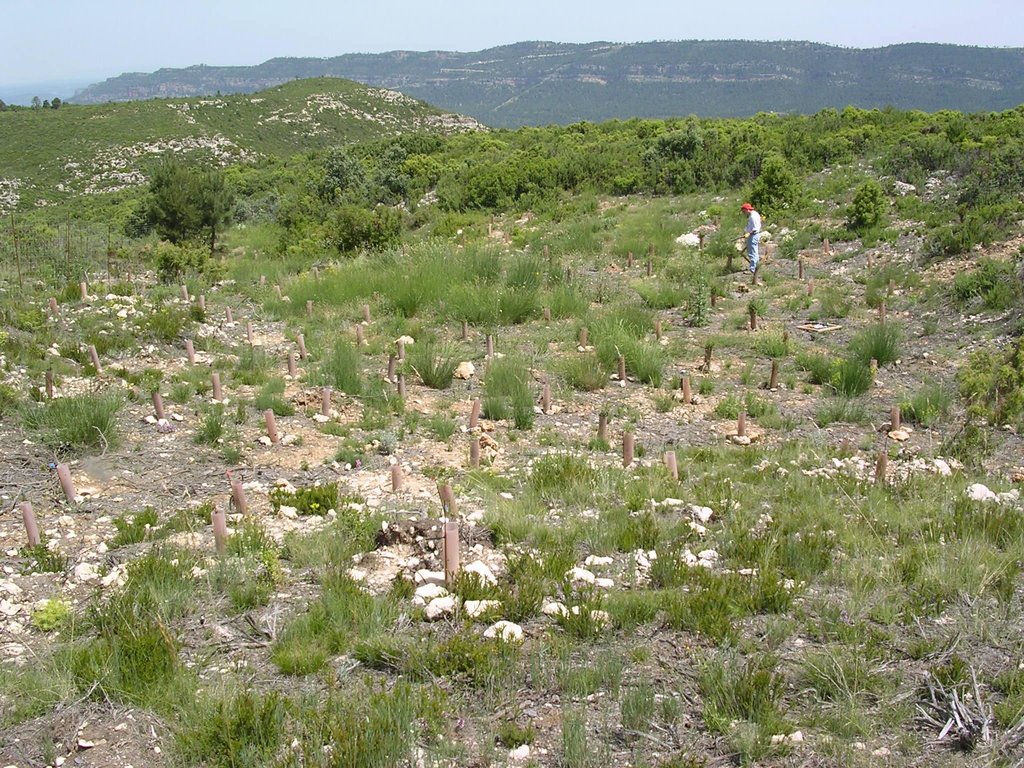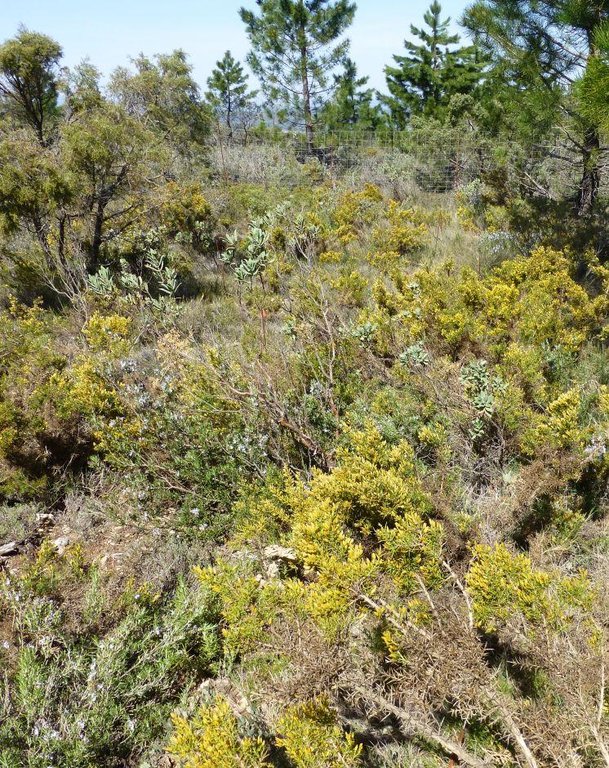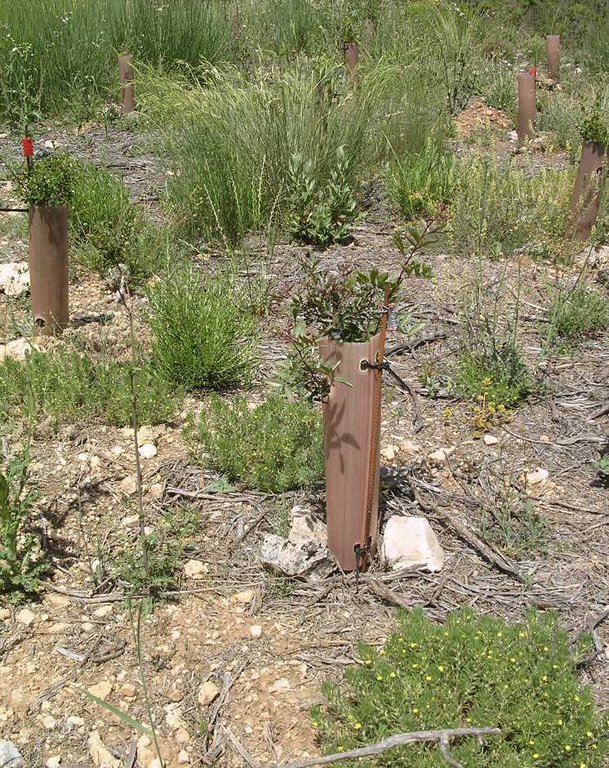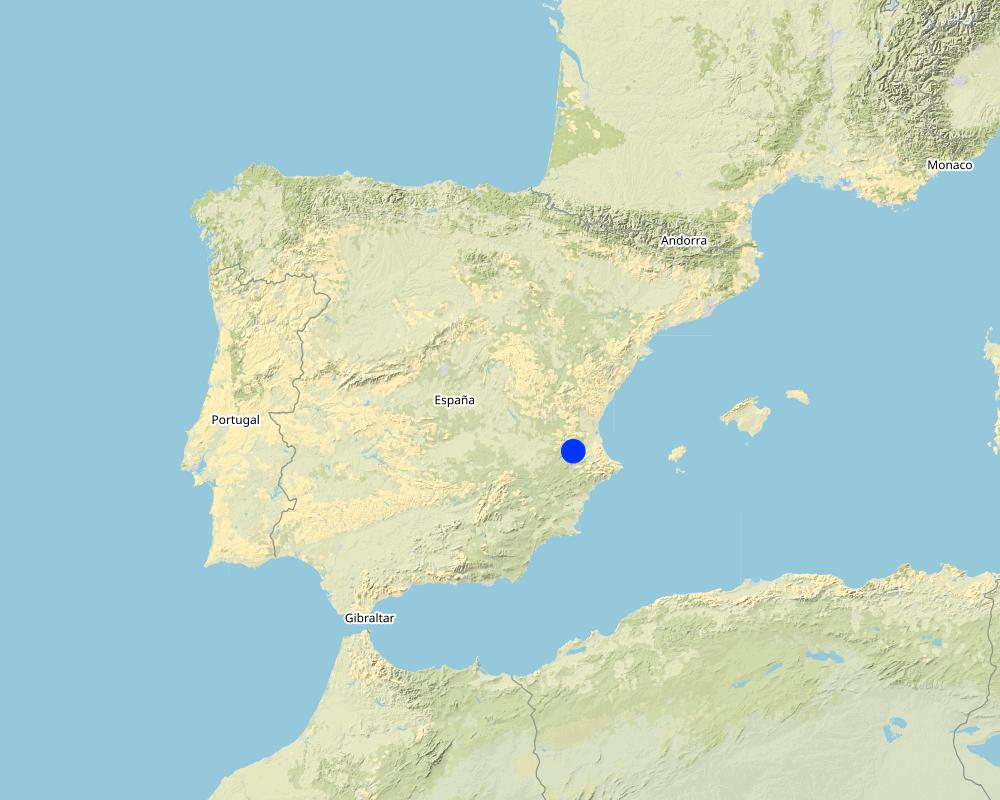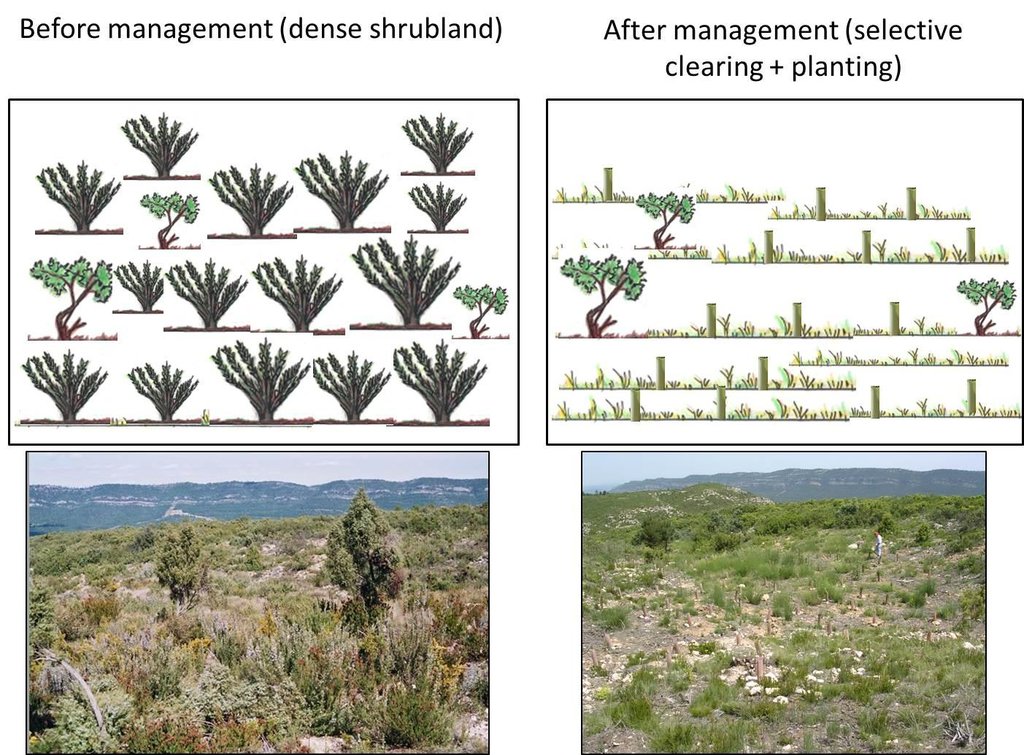Selective clearing and planting experiment to promote shrubland fire resilience [Испания]
- Создание:
- Обновить:
- Составитель: Nina Lauterburg
- Редактор: –
- Рецензенты: Alexandra Gavilano, Deborah Niggli, Hanspeter Liniger
Experimento para aumentar la resiliencia del matorral contra incendios (Spanish)
technologies_1579 - Испания
- Полная аннотация в формате PDF
- Полная аннотация в формате PDF для вывода на печать
- Полная аннотация в формате интернет-страницы
- Полная аннотация (неотформатированно)
- Selective clearing and planting experiment to promote shrubland fire resilience: 4 января 2017 г. (inactive)
- Selective clearing and planting experiment to promote shrubland fire resilience: 30 июля 2019 г. (inactive)
- Selective clearing and planting experiment to promote shrubland fire resilience: 1 декабря 2021 г. (public)
Просмотреть разделы
Развернуть все Свернуть все1. Общая информация
1.2 Контактные данные специалистов и организаций, участвующих в описании и оценке Технологии
Специалист по УЗП:
Valdecantos Alejandro
Fundación Centro de Estudios Ambientales del Mediterráneo (CEAM)
Испания
Специалист по УЗП:
Baeza Jaime
Fundación Centro de Estudios Ambientales del Mediterráneo (CEAM)
Испания
Название проекта, содействовавшего документированию/оценке Технологии (если применимо)
Catastrophic shifts in drylands (EU-CASCADE)Название организации (-ий), содействовавших документированию/оценке Технологии (если применимо)
Centro de Estudios Ambientales del Mediterraneo (CEAM) - Испания1.3 Условия, регламентирующие использование данных, собранных ВОКАТ
Составитель и ответственный(-ые) специалист(-ы) согласны с условиями, регламентирующими использование собранных ВОКАТ данных:
Да
1.4 Декларация по устойчивости описываемой Технологии
Вызывает ли описанная здесь Технология проблемы деградации земель настолько, что ее нельзя назвать природосберегающей?
Нет
2. Описание Технологии УЗП
2.1 Краткое описание Технологии
Определение Технологии:
The combination of clearing of fire-prone seeder species and planting of more fire resistant resprouter species directs the vegetation to later successional stages which increases the resilience to fires.
2.2 Подробное описание Технологии
Описание:
The forests and shrublands in Ayora experienced a series of disturbances in the past (such as deforestation and land use), which resulted in the degradation of the vegetation and the reduction of the resilience to fires. At present, there is a high fire incidence. Post-fire landscapes regenerated with a high and continuous fuel accumulation with few native resprouter species. Therefore appropriate vegetation management is crucial.
For management the major goals are to reduce the fuel load and its continuity and to increase the resilience of the vegetation to fires. Within this experiment carried out by CEAM (Centro de Estudios Ambientales del Mediterráneo, University of Valencia) different fuel management techniques were examined. They selected three study sites (Morera, Roñoso, Gachas) with a similar history of land use, vegetation composition, soil characteristics, and a typical post-fire scenario whith scarce occurrence of resprouter species. In each site, four plots were established to test the effect of the following management techniques: 1) control (no action), 2) clearing, 3) planting (within the shrubland) and 4) the combination of clearing and planting.
The main purpose of this experiment was to find out which management technique is the most appropriate to prevent fires and it was shown that the combination of selective clearing of fire-prone shrubs (fuel control) and planting of more resistant resprouter species can increase the resilience to fires and is therefore a suitable management practice. Compared to the other management techniques, there are some advantages. Clearing the vegetation (either by hand or mechanically) reduces the fire risk and enhances seedling establishment and growth. Furthermore, the cleared vegetation is chipped and applied in-situ as mulch, which protects the soil from erosion, reduces soil temperature and moisture loss, and enhances carbon conservation. Additionnally, selective clearing allows to preserve desired species and by planting resprouter species the natural processes can be accelerated. Once established, resprouter species persist for a long time which promotes an increase of the vegetation resilience.
In this documentation, only the combination of clearing and planting is evaluated since this action is considered as the most appropriate management practice.
In each study site, the experimental area covered about 5000m2 (3 plots of 1000m2 each, one plot of 2000m2). To test the effect of the combination of clearing and planting, a clearing machine was used to clear a plot of 1000 m2 in all three sites. The few resprouting individuals such as Juniperus oxycedrus and Quercus ilex and also some seeder trees such as Pinus halepensis and Pinus pinaster were left standing. The planting holes (0.35 m2) were created with a tractor using a backhoe. The slash and brush chips generated by the clearing were reused in the planting holes as mulch which resulted in ecological benefits.
In February 2003, native resprouters of late successional stages with a low amount of dead fuel were planted, such as Quercus ilex, Rhamnus alaternus and Pistacia lentiscus, all protected by a plastic tree shelter to prevent browsing.
The seedlings were grown for 8 months in a nursery in Santa Faz (Alicante) and then transferred to a nursery in La Hunde (Ayora) one month before planting. The Regional Forest Services of Valencia provided seeds as well.
The region of Ayora is mountainous with a dry subhumid climate (~380 mm annual rainfall). The risk of fire incidence is at its highest from June to September when there are adverse conditions like drought, high temperatures and strong winds (mainly the winds coming from central Spain, called “poniente”). The population density is very low and there are only few job opportunities (e.g. marginal agriculture, grazing, hunting, beekeeping). Most of the inhabitants work in the nuclear power plant. Forest management could be a source for jobs.
2.3 Фотографии, иллюстрирующие Технологию
2.5 Страна/ регион/ места, где применяется Технология, информация о которых собрана в данной Анкете
Страна:
Испания
Административная единица (Район/Область):
Spain, Valencia
Более точная привязка места:
Ayora
Охарактеризуйте пространственное распространение Технологии :
- равномерно-однородное применение на определенной площади
Если точная область неизвестна, укажите приблизительную площадь:
- < 0,1 км2 (10 га)
Пояснения:
Boundary points of the Technology area: Morera Centre latitude (N): 39° 07’ 17’’ Centre longitude (W): 0°57’11’’
Roñoso Centre latitude (N): 39° 07’ 22’’ Centre longitude (W): 0°57’56’’
Gachas Centre latitude (N): 39° 01’ 58’’ Centre longitude (W): 0°53’30’’
Map
×2.6 Сколько лет применяется данная Технология
Если год начала применения Технологии достоверно неизвестен, дайте примерную оценку:
- менее 10 лет назад (недавняя)
2.7 Внедрение Технологии
Укажите, как именно Технология УЗП была внедрена:
- в качестве научного/ полевого эксперимента
Пояснения (тип проекта и т.д.):
This research was carried out in the framework of the SPREAD project funded by the European Commission (2002-2005), in the year 2003.
3. Классификация Технологии УЗП
3.1 Основные цели и задачи реализации Технологии
- снижение или предотвращение деградации земель, восстановление нарушенных земель
- снижение риска стихийных бедствий
3.2 Текущий(-ие) тип(-ы) землепользования на территории, где применяется Технология

Леса/ лесистая местность
- Quercus ilex, Rhamnus alaternus, Pistacia lentiscu
Продукции и услуги:
- Древесина
- Дрова
- Плоды и орехи
- Другие продукты леса
- Выпас/ ощипывание молодых побегов и листьев
- Природоохранные/ защитные
- Рекреация/ туризм
- Защита от природных катаклизмов
- wind mill parc, hunting
Пояснения:
Major land use problems (compiler’s opinion): In Spain the prevalent dense shrublands (dominated by seeder species), which resulted from agricultural land abandonment and fire occurrence, contain a high fire risk because of both the high fuel loads and their continuity. Resprouter species have been removed in the past and are therefore scarce, whereas seeder species are abundant and increase the risk of fires.
Selective felling of (semi-) natural forests: As a management practice. The forest should be cut more frequently since there is a huge amount of fuel but there is no money for management.
Plantation forestry: Almost the whole forest in this region was planted. Furthermore, they also planted different species as a management practice.
3.5 Категория УЗП, к которой относится Технология
- лесное хозяйство в естественных и измененных лесах
- лесное хозяйство в лесопосадках
3.6 Мероприятия УЗП, выполняемые в рамках Технологии

Мероприятия с использованием растительности
- Р1: Древесный и кустарниковый покров
- Р3: Расчистка растительности
- Р5: Другие
Пояснения:
Specification of other vegetative measures: Introduction of fire resistant species
Type of vegetative measures: aligned: -linear
3.7 Основные проблемы деградации земель, на решение которых направлена Технология

биологическая деградация
- Бп: разрушительные последствия пожаров
- Бв: потеря природного разнообразия
Пояснения:
Main causes of degradation: deforestation / removal of natural vegetation (incl. forest fires) (Deforestation in the past (removal of resprouter species), land abandonment, uncontrolled growth of fire prone vegetation, afforestations, forest fires), other human induced causes (specify) (change of vegetation composition to fire-prone shrubland), population pressure (Vast areas were deforested in the past for agriculture, important key species were removed. After land abandonment there was a lack of management strategies.), poverty / wealth (The current economic crisis in Spain leads to a lack of investment in forest management, therefore only a minor part of forests is managed), labour availability (In the past there was outmigration from the region to the big cities and therefore there was a lack of management)
Secondary causes of degradation: change of seasonal rainfall (More variability in precipitation leads to a higher risk of fires), droughts (more fires during droughts), land tenure (The state is only allowed to apply management practices in public forest. The private forest is often not managed which increases the risk of fires and the resulting degradation), inputs and infrastructure: (roads, markets, distribution of water points, other, …) (There were big fires in the past because of the lack of fire extinction media like water ponds, streets, transport media (this has been improved now)), education, access to knowledge and support services (Loss of knowledge, important for today’s fires: People (especially from the cities) are not aware anymore of the risk of fire. In the past people lived with the risk and knew how to prevent fires.), governance / institutional (Law to induce implementation of conservation interventions (ley forestal 3/1993). Before this law was implemented there were less conservation practices and therefore a higher fire risk)
3.8 Предотвращение и снижение деградации земель, или восстановление нарушенных земель
Укажите цель Технологии по отношению к деградации земель :
- предотвращение деградации земель
- снижение деградации земель
4. Технические характеристики, мероприятия по практической реализации, вложения и стоимость
4.1 Технический рисунок, иллюстрирующий Технологию
Спецификация (пояснения к техническому рисунку):
On the left, the situation before management is illustrated. Dense shrublands contain a high fire risk due to their high fuel amount and continuity. On the right, the situation after management is shown. The combination of selective clearing of fire-prone seeder species and planting of more fire resistant resprouter species (illustrated by tree shelters in the drawing) promotes shrubland resilience to fires.
Location: Ayora. Valencia, Spain
Date: 13-12-2013
Technical knowledge required for field staff / advisors: high (The experiment was carried out by scientists (biologists) with a high technical knowledge.)
Technical knowledge required for land users: low (In case of upscaling this experiment to a local or regional level, the work could be carried out by land users with a low technical knowledge, with technical support of scientists and forest agents)
Main technical functions: control of fires, reduction of dry material (fuel for wildfires), Promotion of vegetation species and varieties (more fire resistant vegetation composition)
Secondary technical functions: control of raindrop splash, increase in nutrient availability (supply, recycling,…), increase / maintain water stored in soil
Aligned: -linear
Vegetative material: T : trees / shrubs
Number of plants per (ha): 1000
Vertical interval between rows / strips / blocks (m): <2m
Spacing between rows / strips / blocks (m): <2m
Vertical interval within rows / strips / blocks (m): <2m
Width within rows / strips / blocks (m): <2m
Vegetative measure: Selective vegetation clearing
Vegetative material: T : trees / shrubs
Trees/ shrubs species: Planted species: Pistacia lentiscus, Quercus ilex and Rhamnus alaternus.
Other species: Removed species: Ulex parviflorus, Rosmarinus officinalis, Cistus albidus
Автор:
Nina Lauterburg
4.2 Общая информация по необходимым вложениям и стоимости
другая/ национальная валюта (название):
Euro
Если это необходимо, укажите обменный курс от доллара США к местной валюте (например, 1 доллар США = 79,9 бразильского реала): 1 доллар США =:
0,74
Укажите среднюю дневную заработную плату наемных работников:
47.00
4.3 Мероприятия, необходимые для начала реализации
| Деятельность | Время (сессия) | |
|---|---|---|
| 1. | Cutting and chipping (in-situ) trees and shrubs (removed species: ulex parviflorus, rosmarinus officinalis, cistus albidus. Natural regenerated species which are not cleared: pinus halepensis, pinus pinaster, quercus ilex, juniperus oxycedrus) | autumn/winter (when the vegetation activity is slowed down) |
| 2. | Planting (planted species: pistacia lentiscus, quercus ilex, rhamnus alaternus) | autumn/winter (february 2003) |
4.4 Вложения и затраты, необходимые для начала реализации
| Опишите затраты | Единица | Количество | Затраты на единицу | Общая стоимость на единицу | % затрат, оплаченных землепользователями | |
|---|---|---|---|---|---|---|
| Оборудование | machine use | ha | 1,0 | 3089,0 | 3089,0 | |
| Оборудование | tree shelters | ha | 1,0 | 945,0 | 945,0 | |
| Посадочный материал | seedlings | ha | 1,0 | 4587,0 | 4587,0 | |
| Общая стоимость запуска Технологии | 8621,0 | |||||
| Общие затраты на создание Технологии в долларах США | 11650,0 | |||||
Пояснения:
Duration of establishment phase: 0.5 month(s)
4.5 Поддержание/ текущее обслуживание
| Деятельность | Сроки/ повторяемость проведения | |
|---|---|---|
| 1. | There is no maintenance, but in case of maintenance they would do selective clearings (using machines) | all 5-7 years in autumn/winter |
4.6 Стоимость поддержания/ текущего обслуживания ( в год)
| Опишите затраты | Единица | Количество | Затраты на единицу | Общая стоимость на единицу | % затрат, оплаченных землепользователями | |
|---|---|---|---|---|---|---|
| Оборудование | machine use | ha | 1,0 | 446,0 | 446,0 | |
| Общая стоимость поддержания Технологии | 446,0 | |||||
| Общие затраты на поддержание Технологии в долларах США | 602,7 | |||||
Пояснения:
The costs were calculated for the application of the technology (combination of clearing and planting) on one hectare. The costs can vary depending on the amount of vegetation which has to be cleared (site specific). The costs of the clearing amount to 1090 Euro per ha (1470 Dollar). The costs of the plantation (both labour and machines) are approximately 5300 Euro per hectare (7150 Dollar). But it should also be noted that the application of the selective clearing and planting on a vast continuous area is not the aim of this technology, but rather to apply the treatments on some selected spots to reduce the continuity of fire-prone seeder species and to increase the probability of dispersal of resprouter species (e.g. by birds). Therefore the costs would be lower than indicated here.
The currency rate (Euro-Dollar) was calculated on November 16th, 2013.
4.7 Наиболее значимые факторы, влияющие на стоимость затрат
Опишите наиболее значимые факторы, влияющие на стоимость затрат:
Slope (if the slope is steep, the work is much more difficult and takes more time), distance from a street (people can work less in a day if they have to walk far to clear/plant), vegetation density (it takes more time to clear a densely vegetated area).
5. Природные и социально-экономические условия
5.1 Климат
Среднегодовое количество осадков
- < 250 мм
- 251-500 мм
- 501-750 мм
- 751-1000 мм
- 1001-1500 мм
- 1501-2000 мм
- 2001-3000 мм
- 3001-4000 мм
- > 4000 мм
Агроклиматическая зона
- Умеренно-влажная
Thermal climate class: temperate
5.2 Рельеф
Склоны (преобладающие):
- пологие (0-2%)
- покатые (3-5%)
- покато-крутые (6-10%)
- крутые (11-15%)
- очень крутые (16-30%)
- чрезвычайно крутые (31-60%)
- обрывистые (>60%)
Формы рельефа:
- плато/ равнины
- гребни хребтов/холмов
- склоны гор
- склоны холмов
- подножья
- днища долин
Зона высотной поясности:
- 0-100 м над уровнем моря
- 101-500 м н.у.м.
- 501-1000 м н.у.м.
- 1001-1500 м н.у.м.
- 1501-2000 м н.у.м.
- 2001-2500 м н.у.м.
- 2501-3000 м н.у.м.
- 3001-4000 м н.у.м.
- > 4 тыс. м н.у.м.
5.3 Почвы
Средняя мощность почв:
- поверхностные (0-20 см)
- неглубокие (21-50 см)
- умеренно глубокие (51-80 см)
- глубокие (81-120 см)
- очень глубокие (> 120 см)
Гранулометрический состав (верхнего горизонта):
- тонкодисперсный/ тяжёлый (глинистый)
Содержание органического вещества в верхнем горизонте:
- среднее (1-3%)
5.4 Доступность и качество воды
Уровень грунтовых вод:
5-50 м
Доступность поверхностных вод:
недостаточны/ отсутствуют
Качество воды (без обработки):
питьевая вода хорошего качества
5.5 Биоразнообразие
Видовое разнообразие:
- средняя
5.6 Характеристика землепользователей, применяющих Технологию
Рыночная ориентация производства:
- смешанный (натуральный / коммерческий)
Индивидуальное или коллективное хозяйство:
- использующее наемных работников (компания, государство)
Пол:
- мужчины
Укажите другие важные характеристики землепользователей:
Difference in the involvement of women and men: The experiment was done by biologists, all of them were men.
Population density: < 10 persons/km2
Annual population growth: negative
5.8 Собственность на землю, права на земле- и водопользование
Землевладелец:
- государственная
- индивидуальная, оформленная в собственность
Право землепользования:
- индивидуальное
- public/open access but organised (e.g. wood, hunting)
- public/open access but organised (e.g. wood, hunting)
Пояснения:
There is some public land, controlled by the state. But there is also some private land. The access to the public land is open but organized. Permission is needed from the government to cut trees, to build a house or to hunt. There are some private hunting areas for which the hunting association has to pay a fee.
6. Воздействия и заключительные положения
6.1 Влияние Технологии УЗП в пределах территории ее применения
Социально-экономическое воздействие
Продуктивность
производство кормов
Комментарий/ пояснения:
More grasses for animals (game and livestock) in the cleared areas
качество кормов
Комментарий/ пояснения:
Animals (especially goats) eat everything but they like more young grasses than shrubs
производство продуктов животноводства
Комментарий/ пояснения:
Game/wildlife and livestock are better because there is an increase in fodder quantity and quality
производство древесины
Комментарий/ пояснения:
Production increases because there is less competition between species and more species planted. The wood/timber generated by the clearing can be used for biomass, fertilizers, pellets, firewood. A part of the wood is chipped in-situ and applied as mulch
производство электроэнергии
Комментарий/ пояснения:
Bioenergy (biomass)
Доходы и затраты
сельскохозяйственные издержки
Комментарий/ пояснения:
Less damage on the cultivated fields because the wild animals do not destroy the fields anymore and stay in the forest (because there is more grass available due to clearings).
Социальное и культурное воздействие
культурные возможности
Комментарий/ пояснения:
People appreciate the visual impact of a cleared forest with a high species richness. It has a high aesthetic value and offers recreational opportunities. Since the planted species are more fire-resistant this value can be sustained.
возможности отдыха и рекреации
Комментарий/ пояснения:
People appreciate the visual impact of a cleared forest with a high species richness. It has a high aesthetic value and offers recreational opportunities. Since the planted species are more fire-resistant this value can be sustained.
знания в области УЗП/ деградации земель
Комментарий/ пояснения:
Local people know about the importance of conservation of the area and really like to have the forest protected of wildfires. They will learn about the relationship of planting later-successional species and the reduction of the fire hazard.
смягчение конфликтов
Комментарий/ пояснения:
Less fires result in a decrease of the destroyed area, less money will have to be invested in restoration or fire extinction. Farmers, hunters,honey producers will experience fewer losses. Wild animals remain in the forest (more grasses after clearing).
положение социально и экономически уязвимых групп населения
Комментарий/ пояснения:
The clearing and planting could create more job opportunities for unemployed people. This is especially important during the current economic crisis.
Экологическое воздействие
Водный цикл/ поверхностный сток
испарение
Комментарий/ пояснения:
Due to the mulch layer more moisture is stored in the soil and less water is lost by evaporation (the soil is covered).
Почвы
влажность почв
Комментарий/ пояснения:
More soil moisture because of less dense shrubland and mulch cover after clearing
почвенный покров
Комментарий/ пояснения:
Mulch layer
утрата почв
Комментарий/ пояснения:
Less erosion because the soil is protected by a mulch layer.
образование корки на поверхности почв/ запечатывание
Комментарий/ пояснения:
Mulch layer protects the soil from crusting.
круговорот/ восполнение питательных веществ
почвенное / подземное органическое вещество/ углерод
Биоразнообразие: растительность, животный мир
биомасса/ содержание углерода в надземной биомассе
разнообразие флоры
Комментарий/ пояснения:
Reintroduction of native species which disappeared due to removal by humans in the past.
разнообразие фауны
Комментарий/ пояснения:
There might be more animals because of the fodder supply. Further, different species (e.g. birds) might be attracted by the reintroduced plant species.
борьба с вредителями/ болезнями
Комментарий/ пояснения:
Mono-plantations are bad for the propagation of a pest. After clearing there is a decrease in competition, plants are in healthier conditions,less prone to diseases.Weak plants are eliminated which reduces the risk of pests (always weak plants affected).
Климат и снижение риска стихийных бедствий
выбросы углекислого газа и парниковых газов
Комментарий/ пояснения:
Carbon sequestration, and less fires because the fire-prone shrubs are removed and more fire-resistant trees and shrubs are prevalent
риск пожаров
Комментарий/ пояснения:
The fire risk is reduced in the long term because by clearing fire-prone and planting more fire-resistant species the vegetation is redirected towards later successional stages (ecosystem more resilient against fires).
скорость ветра
Другие экологические последствия
germination of competing seeds
soil surface temperature
Комментарий/ пояснения:
Mulch layer
6.3 Подверженность и чувствительность Технологии УЗП к постепенным изменениям климата и экстремальным погодным явлениям/ стихийным бедствиям, связанным с изменением климата (в понимании землепользователей)
Постепенное изменение климата
Постепенное изменение климата
| Сезон | увеличение или уменьшение | Насколько успешно Технология справляется с этим? | |
|---|---|---|---|
| среднегодовые температуры | увеличилось | плохо |
Экстремальные явления, связанные с изменением климата (стихийные бедствия)
Погодные стихийные бедствия
| Насколько успешно Технология справляется с этим? | |
|---|---|
| местные ливневые дожди | хорошо |
| местные ураганы | хорошо |
Стихийные бедствия климатического характера
| Насколько успешно Технология справляется с этим? | |
|---|---|
| засухи | хорошо |
Гидрологические стихийные бедствия
| Насколько успешно Технология справляется с этим? | |
|---|---|
| регулярные наводнения (выход рек из берегов) | хорошо |
Другие воздействия, связанные с изменением климата
Другие воздействия, связанные с изменением климата
| Насколько успешно Технология справляется с этим? | |
|---|---|
| temperature decrease, snow, frost | плохо |
6.4 Анализ эффективности затрат
Насколько получаемый результат сопоставим с первоначальными вложениями (с точки зрения землепользователей)?
Эффективность затрат в краткосрочной перспективе:
слабо отрицательное
Эффективность затрат в долгосрочной перспективе:
очень позитивное
Насколько получаемый результат сопоставим с текущими расходами по поддержанию технологии (с точки зрения землепользователей)?
Эффективность затрат в краткосрочной перспективе:
очень позитивное
Эффективность затрат в долгосрочной перспективе:
очень позитивное
Пояснения:
Short term returns are slightly negative because the management practice is expensive and until the trees reach a mature state, there are not many returns (in terms of wood and biomass). In the long term this management practice has very positive results because it increases the resilience to fires and can be seen as a sustainable management of fire-prone areas. Additionally, wood and biomass can be extracted. The idea is not to apply any maintenance in the first 10 years after the establishment.
6.5 Внедрение Технологии
Пояснения:
There is no adoption trend since this was only an experiment, but maybe there will be the possibility to upscale this technology in a regional project.
6.7 Сильные стороны/ преимущества/ возможности Технологии
| Сильные стороны/ преимущества/ возможности по мнению землепользователей |
|---|
| Almost all villagers prefer a managed forest. It has a high aesthetic and recreational value. Through the application of this technology the awareness of the risk of wildfires would probably increase. |
| Shepherds and farmers benefit from forest clearings. There are more young grasses in the forest which provides fodder for livestock. Also wild animals benefit from this food supply which in turn hinders them to destroy cultivated fields of the farmers. |
| Сильные стороны/ преимущества/ возможности по мнению составителя или других ключевых специалистов |
|---|
|
After fires, the natural landscape regenerated with a high and continuous fuel amount and a scarce occurrence of native resprouter species. It is crucial to apply management actions to reduce the fire hazard. The experiment demonstrated that it is possible to accelerate the post-fire vegetation response (which promotes ecosystem resilience). |
| Planting of resprouting species in post-fire areas can accelerate the natural process. Clearing of the vegetation reduces the fire risk, but this treatment may also enhance seedling establishment and growth. |
| The slash and brush chips generated by the clearings can be reused in the planting holes. This mulch layer protects the soil surface and reduces both the soil surface temperature and the germination of competing seeds while increasing the soil moisture content, especially in the driest periods. |
|
The combination of clearing and planting resprouting species seems to be an appropriate option for managing these areas because, once established, the resprouting species persist for a long time and lead to an increase of the ecosystem resilience. |
| Social and economic benefits for the locals. Especially during the economic crisis the forest management is an important source for jobs. |
6.8 Слабые стороны/ недостатки/ риски Технологии и пути их преодоления
| Слабые стороны/ недостатки/ риски по мнению составителя или ответственных специалистов | Возможные пути их преодоления/снижения? |
|---|---|
| The management activities are expensive and labour-intensive. The state does not invest much money in prevention of forest fires but focuses more on fire extinction. | More investment in prevention of forest fires is required and this management practice could increase the ecosystem resilience against fires in the long term in a sustainable way. This would also generate jobs. This technology implies a combination of techniques (selective clearing and planting). Costs may be reduced by implementing individual techniques but positive results may also be reduced. |
| The technology could result in a reduction of the animal production because grazing should be restricted after planting to ensure the growth of the planted seedlings. | Since the technology would not be applied over vast areas but only locally on some plots, the fodder supply would probably still cover the needs of the animals. |
| Depending on the site, some soil may be exposed to erosion due to mechanical clearing. | Mulching with brush chipping can minimize or even solve this problem. |
| After clearing, an increase in wind velocity might occur. | The planted trees will grow which will again result in the reduction of this problem. |
7. Справочные материалы и ссылки
7.1 Методы сбора/ источники информации
- выезды на места, полевые обследования
- опросы специалистов/экспертов по УЗП
Когда были собраны данные (на местах)?
26/04/2013
7.2 Ссылки на опубликованные материалы
Название, автор, год публикации, ISBN:
Valdecantos, A., Baeza, M.J., Vallejo, V.R. (2009): Vegetation management for promoting ecosystem resilience in fire-prone Mediterranean shrublands. Restoration Ecology 17, 3: 414-421.
Ссылки и модули
Развернуть все Свернуть всеСсылки
Нет ссылок
Модули
Нет модулей


